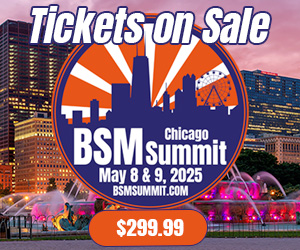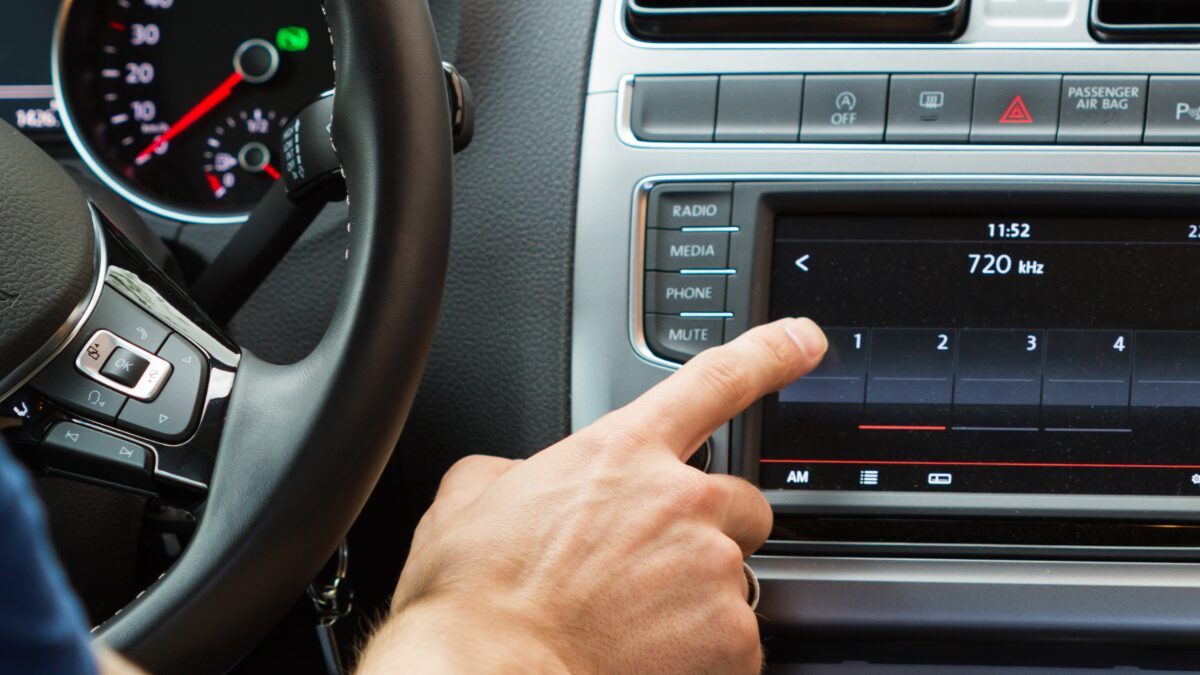While the radio industry insists that our medium is still king, I’m skeptical. I hope the numbers are being spun properly, I just have doubts. In either case, we’re sweeping a lot of stuff under the rug. People may still be “sampling” radio but are they listening? Do they buy what you’re selling?
The typical news/talk station airs 22 minutes of commercials per hour. When you add in five minutes of network news and spots plus recorded promos (commercials for ourselves), we’re talking half an hour of content killer.
I’m a typical listener. With rare exceptions, I only listen while I’m driving. Behind the wheel, my habit is standard: punch around my presets until I hear something of interest or at least actual content and not commercials. When a talk segment ends, I listen to the tease and then punch out. I don’t sit through what I know will be a five or six-minute commercial break. If the tease was done well and it interests me, I’ll try to remember to come back. Maybe I will, maybe I won’t.
Here in Dallas these days, I mainly listen to our two excellent sports talk stations, The Ticket and The Fan. And I always smile when I hear them constantly trying to convince me that by choosing to listen to their particular station I’m part of an exclusive club. That’s nothing new really but the branding is ingenuous.
105.3 The Fan cleverly labels listeners “TOLOs”, implying people who wisely “Turn it On, Leave it On”. The Ticket merely plays the highest authority card, referring to their listeners as “P1s”. I know what it means but the average listener has no clue. It’s an inside joke. I’ve never heard the station explain it but their faithful listeners supposedly wear the badge proudly.
I’ve never seen any figures on shared listening but I expect the crossover between the two sports talk stations would be nearly 100%. People do what I do, punch back and forth looking for interesting content.
After hiring and inspiring great talent and setting the tone for a station’s identity, a news/talk programmer’s primary job is trying to navigate a sea of clutter. There are various ways to do it but anything short of reducing the number and length of commercial breaks is just rearranging the furniture.
One of the most common tactics is promoting a commercial-free segment. In my opinion, that’s just calling attention to the problem and admitting that commercials are a necessary evil. I’ll bet your clients love that.
I admire and pity radio salespeople who have always had to fight to survive in a dog-eat-dog world but now also have to sell clients on the idea that their money will be well spent even though their message might be buried in the middle of a five-minute cluster.
Are there too many commercials on the air? Hell yes. 22 minutes per hour for talk and news? Why do people sit through that?
They don’t. They pop around the dial as I do, and are increasingly learning that podcasts offer information and entertainment with far fewer interruptions. The RTDNA and the RAB don’t want to admit that. Nielsen puts a rosy spin on the numbers because broadcasters are their main customers. Even highly respected news outlets report the idea that radio is doing great but read this and see if you don’t share my skepticism below the headline:
Americans Listen To Far More Radio Than Podcasts—Even Young People, New Data Shows
“American adults still spend an overwhelming majority of their daily listening time on radio broadcasts despite the rise in popularity of podcasts and music streaming services, new Nielsen data on listening habits in the first quarter of 2024 shows. Though younger audiences are starting to buck that trend by choosing on-demand audio at a higher rate than their elders.” – Forbes, May 1, 2024
I’m not the smartest guy in any room. I’ve never been a GM or Sales Manager. I have been an air talent and program director, though, and I can smell as well as hear the problem. There are far too many commercial interruptions for radio to survive this way for much longer.
Retired WGN morning legend Spike O’Dell agrees.
“Are spot breaks too long? Coming from the talent side of this issue my answer is absolutely. I’m a realist and understand that they’re necessary but a five-minute stop set is a show killer and a ratings killer,” he said. “Why in the world would a listener want to wait through that amount of time unless the content was the most fascinating subject ever?
“When I left the airwaves, we were at 23 minutes of spots an hour, and even I got bored with my own show. Spot breaks and amount of spots played per hour is a long-time sore subject to discuss or ponder. But, it didn’t take this talk show host very long to learn that I was never going to win this issue. Money will always win out. Sometimes management should do the wrong thing because it’s the right thing to do.”
Journalist, former media exec, and USC professor Jerry Del Colliano agrees and has an audacious idea: do what every other industry does and raise prices.
“Charge more for spots and limit to 12 per hour. If there is demand for more, stick to 12 and raise the price of an ad,” he said. “Programmers have known for decades that commercials don’t build time spent listening — and they aren’t doing advertisers any favors by crowding too many spots in and creating an impossible situation to help advertisers succeed.”
Guy Zapoleon is famous for his music radio expertise and innovations but he’s also a veteran radio programmer who has to deal with clutter. He agrees. Cut the spot load and raise the rates. He says it should have been done long ago.
“Telecom and the major companies becoming publicly traded companies along with overpaying for radio stations derailed that idea. Look, I’m a fan of what Now 102.3, a Hot AC type station in Canada, is doing. They only run six minutes an hour versus 12 minutes for most of the competitors but they charge more to meet budget demands. They also go overboard helping their clients with remotes and ideas to drive customers to their clients to increase their ROI value.”
Now, there’s a thought: raise rates but don’t just sell airtime. Sell your clients an exclusive opportunity for a media partnership. Offer them more personal attention, and hands-on assistance than you’ve had time for while juggling a client list and spot load that would choke a horse.
Back to Jerry for a moment. I asked him how and when programmers should design breaks. He brushed aside quarter-hour maintenance and stayed focused on the much bigger consideration.
“Where you place them is less important than the total number per hour but the idea of loading up two-quarter hours to run all your spots obviously isn’t working, hasn’t worked, and won’t work.”
Cutting more jobs can’t improve profitability. Increasing your spot load chases away your audience and your sales strategy. The only thing left is raising rates and reducing inventory.
Explain to your clients that by paying more they are getting an exclusive opportunity to be center stage rather than being shoved to the back of a very crowded bus. Assure them your programming is the best in town.
And make that true.











Excellent insights. Like you, I want to believe that radio is doing as great as we’re being told. But it feels like the scene in The Fly. “I’m Getting Better,” says the devolving old friend who is giving you dry heaves. As for the spot load – the answer you propose seems so logical I wonder what’s preventing it.
Amen! Been preaching it for decade+. And it’s true & effective. 90 seconds is all you have, run local spots first and get back to music. NEVER say “commercial free”, it’s INSULTING to clients and indeed makes the sales job harder to sell the WHY you should advertise as we insult the fact we have to hear about your business. Not rocket science. If it was your money, your business , do you want to run in a 12 pot – 6 minute break? Next to your competitors ads no less???? Of course not, yet we let companies like IHeart lead and do just that. No break should be longer than your frequency … 107 seconds, 92 seconds .. back to the music. Talk radio or sports can do it best , and run more spots in process because they can break more often or include the ad inside content. I would argue 3 or 4 stop downs per hour is limit on music, and again 92-107 seconds long for each. So you have 12x :30 second units to well per hour. Price them as such , and sell idea to clients that they are more valuable since listeners stay tuned in & very limited in supply vs competitors running 22 minutes an hour and no on recalls their ads in process.
Just drove back from MD and some IHeart station called The Fox in Winchester VA are literally ran a commercial break with ads in same break for: Straight Talk Wireless, Cricket Wireless, Straight Talk Wireless (Same ad again), T-Mobile. Hello??? Earth to traffic department … that dog don’t hunt for clients value proposition. Setting aside a BofA and Capital One ad also together in that same commercial break that lasted forever. BAD RADIO = BAD RESULTS = Less Ad $$ = Less Staff = Even WORSE radio. Time to break the cycle !